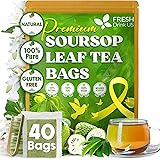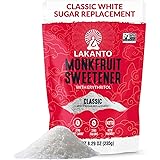The culinary world often celebrates intricate, multi-step preparations. Yet, the video above brilliantly showcases a counter-narrative: the elegant simplicity of a quick onion rice recipe. This specific ‘variety rice’ dish, highlighted in the video, is a masterclass in efficiency. It demonstrates how minimal ingredients and precise technique yield profound flavors. Such dishes are not mere shortcuts; they are foundational culinary expressions. They prioritize impact and speed without compromising depth.
Mastering this type of preparation elevates everyday cooking. It transforms simple components into a cohesive, satisfying meal. The onion rice recipe shown serves as an excellent case study. It teaches us about judicious spice application and thermal management. Understanding these principles enhances all kitchen endeavors. We will delve deeper into the gastronomic wisdom embedded within this humble dish.
Mastering Onion Rice: A Culinary Deconstruction
Creating exceptional onion rice begins long before the pan heats. It involves a strategic understanding of ingredient roles. The video’s initial instruction, “2 tbsp oil,” is more than a quantity. It dictates the medium for flavor transfer and crust formation. Selecting a high-smoke-point oil is crucial here. Refined sunflower or peanut oil are optimal choices. They provide a neutral canvas for the aromatics.
The choice of fat significantly influences the final dish’s character. Consider cold-pressed coconut oil for an authentic South Indian inflection. This introduces a subtle sweetness and distinct aroma. The oil also ensures even cooking of the subsequent ingredients. Proper oil temperature is paramount for the tempering process. A shimmering oil indicates readiness, preventing burned spices.
Aromatic Foundations: Cumin, Onion, and Curry Leaves
The sequence of aromatic additions is no accident. “1/2 tsp cumin seeds” initiates the tempering. Cumin’s essential oils release into the heated fat. This process infuses the oil with a warm, earthy base note. Ensure the cumin seeds splutter gently, indicating full flavor extraction. Over-tempering leads to bitterness, a common novice error.
Next, “3 med. onion” enter the fray. This quantity ensures a substantial onion presence. The onions are the star, providing both texture and sweetness. Dicing them uniformly ensures consistent caramelization. The instruction to “Cook for 2 mins” is a critical benchmark. This duration initiates the Maillard reaction, developing complex savory flavors. It avoids raw onion pungency while maintaining some bite.
Adding “1 sprig curry leaves” introduces a distinct, fragrant dimension. Curry leaves are indispensable in South Indian cuisine. They offer a unique citrusy, nutty aroma. Bruising them slightly before adding maximizes their volatile oil release. Their introduction during the onion sauté allows their flavors to bloom. This creates a layered aromatic foundation.
The Spice Spectrum: Building Flavor Complexity
The subsequent additions, “1/2 tsp ginger garlic paste,” are pivotal. This paste forms the pungent, aromatic core of the masala. It adds a spicy, earthy counterpoint to the sweet onions. Sautéing for “few secs” is critical for raw flavor dissipation. Overcooking it can lead to a burnt, acrid taste. The paste should be fragrant but not browned.
The dry spices follow, creating the dish’s signature profile. “1/2 tsp chili powder” provides calibrated heat. Its intensity can be adjusted based on preference. “1 tsp sambar powder” is a game-changer. Sambar powder is a complex blend, typically containing coriander, cumin, fenugreek, and various lentils. It provides depth, umami, and a characteristic South Indian flavor. This blend is the secret to much of the “variety rice” distinction.
“1/8 tsp turmeric powder” adds vibrant color and earthy undertones. Turmeric also contributes a subtle bitterness that balances other flavors. “Salt to taste” is a crucial instruction for flavor harmonization. Salt enhances all other ingredients, bringing them into focus. “Saute for a min.” allows the spices to toast gently. This deepens their flavor profile and removes any raw spice notes.
Hydration and Integration: The Masala Base
“2 tbsp water” might seem insignificant. However, it serves a vital role: deglazing the pan. This releases any caramelized bits stuck to the bottom. These bits are packed with flavor compounds. The water also helps prevent the dry spices from burning. It creates a cohesive, semi-liquid “masala” base. This ensures even coating of the rice later on.
“Give it a mix” ensures all ingredients are uniformly combined. This step is about integrating the distinct flavors. It creates a harmonious base for the star ingredient. The consistency of this masala is key. It should be thick enough to cling to the rice. Too thin, and it risks diluting the flavor.
The Rice Connection: From Grains to Gourmet
“200 gms cooked rice” is the main carbohydrate component. The type of rice significantly impacts texture. Fluffy, separate grains are ideal for variety rice. Basmati, Sona Masuri, or even parboiled rice work exceptionally well. Using day-old cooked rice is often preferred. Its lower moisture content prevents stickiness, allowing for better masala absorption.
The temperature of the cooked rice also matters. Using slightly warm or room-temperature rice prevents clumping. Cold rice can become too hard to mix evenly. Gently fold the rice into the masala. Avoid vigorous stirring, which can break the grains. The goal is to coat each grain with the flavorful mixture.
Finally, “Coriander leaves” and “1/4 tsp pepper powder” add the finishing touches. Fresh coriander offers a burst of freshness and herbaceous notes. It provides a bright counterpoint to the rich spices. Black pepper introduces a sharp, pungent heat. This layer of heat awakens the palate. “Mix well” ensures these final aromatics are distributed evenly, preparing for the ultimate sensory experience of delicious onion rice.










